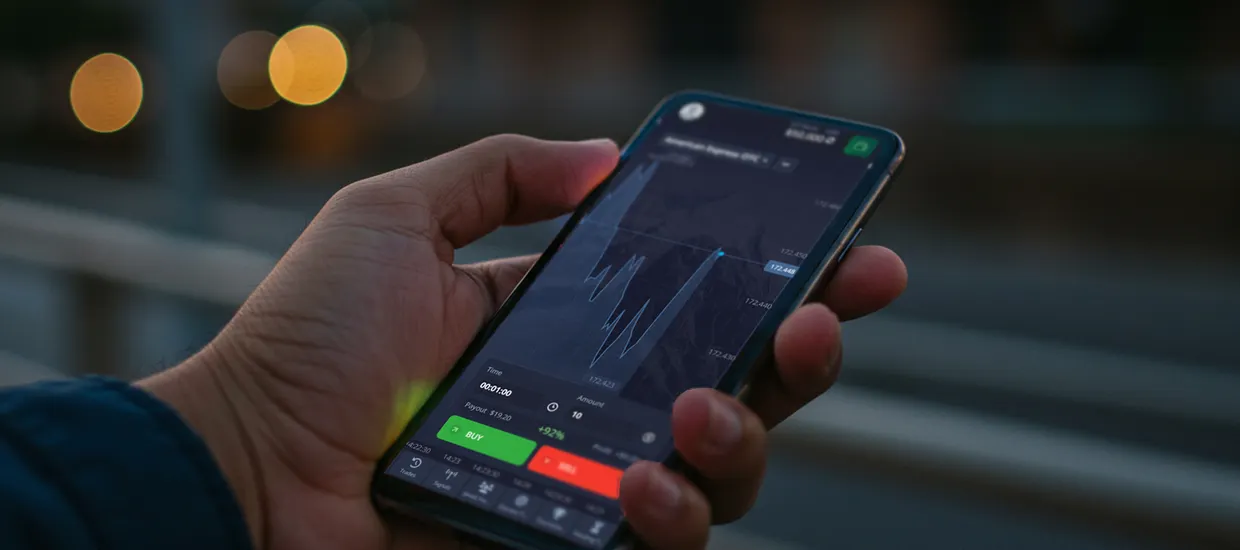- Technical Analysis Implementation
- Risk Management Protocols
- Market Timing Techniques
- Position Sizing Methods
Pocket Option Strategy: Understanding Common Trading Mistakes

Trading in financial markets requires careful planning and execution. Understanding the pocket option strategy is crucial for traders who want to achieve consistent results. Many beginners make preventable mistakes that impact their trading outcomes.
Let's examine the most frequent errors traders encounter when implementing their pocket option strategy and explore practical solutions to overcome these challenges.
| Common Mistake | Impact on Trading | Risk Level |
|---|---|---|
| Emotional Trading | Inconsistent Results | High |
| Account Depletion | Critical | |
| Lack of Analysis | Random Outcomes | High |
| Over Trading | Increased Losses | Medium |
Understanding how to win on Pocket Option requires a systematic approach. Here are key areas traders should focus on:
| Strategy Component | Required Skills | Development Time |
|---|---|---|
| Chart Analysis | Pattern Recognition | 2-3 months |
| Risk Assessment | Mathematical Aptitude | 1-2 months |
| Market Research | Analytical Thinking | 3-4 months |
Implementing a successful pocket option strategy involves understanding market dynamics and maintaining emotional control. Here's what experienced traders recommend:
- Develop a structured trading plan
- Keep detailed trading journals
- Use proper position sizing
- Follow strict risk management rules
| Time Frame | Strategy Focus | Success Rate |
|---|---|---|
| Short-term | Quick Patterns | 65% |
| Medium-term | Trend Following | 72% |
| Long-term | Fundamental Analysis | 78% |
Pocket Option traders should focus on developing these essential skills:
- Technical analysis mastery
- Risk management expertise
- Psychological resilience
- Market research capabilities
| Skill Level | Required Practice | Expected Results |
|---|---|---|
| Beginner | Daily Analysis | Basic Pattern Recognition |
| Intermediate | Strategy Testing | Consistent Results |
| Advanced | Complex Analysis | Profitable Trading |
Remember that success in trading requires patience, discipline, and continuous learning. Focus on developing a robust strategy rather than seeking quick profits.
FAQ
Let's examine the most frequent errors traders encounter when implementing their pocket option strategy and explore practical solutions to overcome these challenges. Common Mistake Impact on Trading Risk Level Emotional Trading Inconsistent Results High Account Depletion Critical Lack of Analysis Random Outcomes High Over Trading Increased Losses Medium Understanding how to win on Pocket Option requires a systematic approach. Here are key areas traders should focus on: Technical Analysis Implementation Risk Management Protocols Market Timing Techniques Position Sizing Methods Strategy Component Required Skills Development Time Chart Analysis Pattern Recognition 2-3 months Risk Assessment Mathematical Aptitude 1-2 months Market Research Analytical Thinking 3-4 months Implementing a successful pocket option strategy involves understanding market dynamics and maintaining emotional control. Here's what experienced traders recommend: Develop a structured trading plan Keep detailed trading journals Use proper position sizing Follow strict risk management rules Trading analysis chart Time Frame Strategy Focus Success Rate Short-term Quick Patterns 65% Medium-term Trend Following 72% Long-term Fundamental Analysis 78% Pocket Option traders should focus on developing these essential skills: Technical analysis mastery Risk management expertise Psychological resilience Market research capabilities Skill Level Required Practice Expected Results Beginner Daily Analysis Basic Pattern Recognition Intermediate Strategy Testing Consistent Results Advanced Complex Analysis Profitable Trading Remember that success in trading requires patience, discipline, and continuous learning. Focus on developing a robust strategy rather than seeking quick profits.
The most effective time frame depends on your trading style and availability. Medium-term trading (1-4 hours) often provides a balance between analysis quality and opportunity frequency.
How much capital should I start with?
Start with capital you can afford to risk. Most successful traders recommend beginning with $500-1000 to allow proper position sizing and risk management.
What technical indicators work best?
Moving averages, RSI, and MACD are reliable indicators. However, their effectiveness depends on proper implementation within your strategy framework.
How do I manage trading emotions?
Develop a structured trading plan, stick to risk management rules, and maintain a trading journal to track your progress and emotions.
What percentage of capital should I risk per trade?
Professional traders typically risk 1-2% of their total capital per trade to ensure account longevity and manage drawdowns effectively.